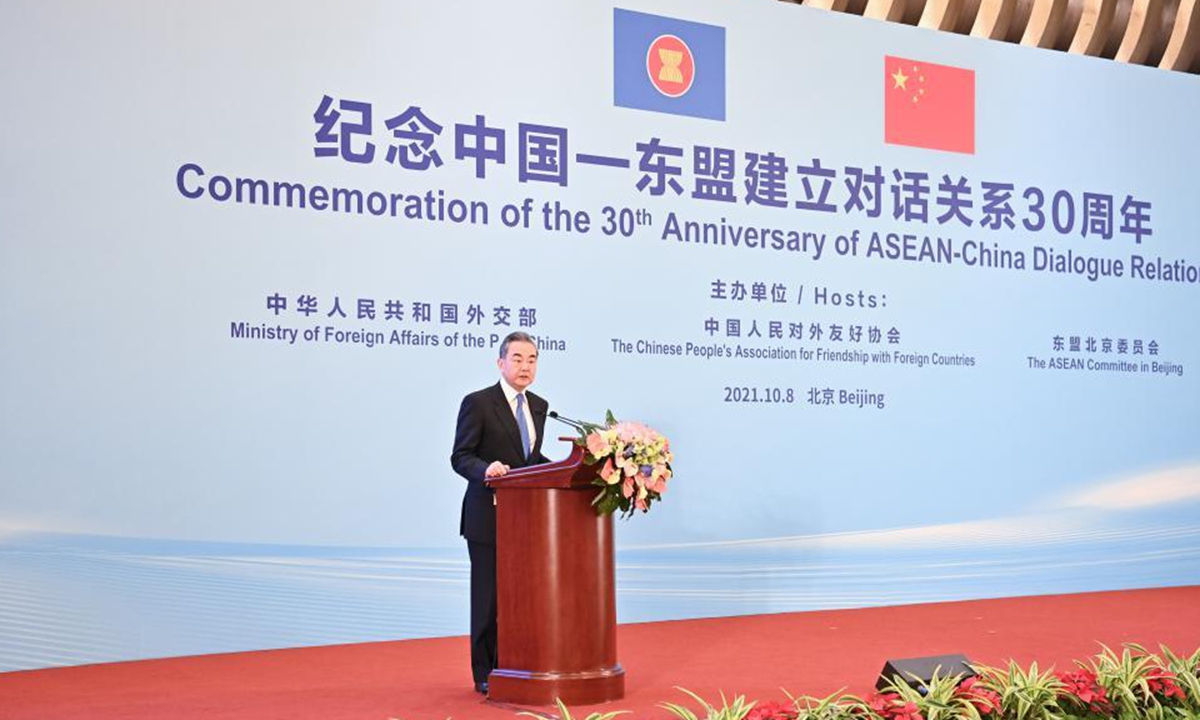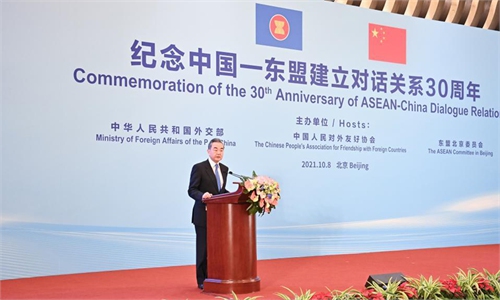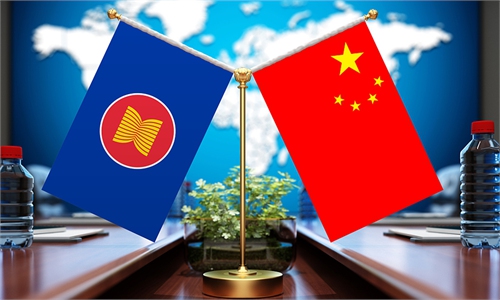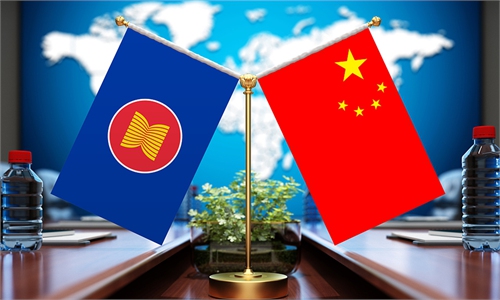
Chinese State Councilor and Foreign Minister Wang Yi speaks at a reception to commemorate the 30th anniversary of the establishment of dialogue relations between China and ASEAN in Beijing, capital of China, October 8, 2021. Photo: Xinhua
As stated in Article 1, Paragraph 15 of the ASEAN Charter, it is important "to maintain the centrality and proactive role of ASEAN as the primary driving force in its relations and cooperation with its external partners in a regional architecture that is open, transparent and inclusive." As the most integrated and representative group of nations in East Asia, ASEAN's "centrality" in regional cooperation not only fits the reality of regional development, but also conforms to the world development trend.As a Chinese saying goes, "a drop of water does not make a sea, and a single tree does not make a forest." For over half a century since its establishment in 1967, ASEAN has sought to bring its member states together to speak with one voice. On that basis, it has worked to advance the building of the ASEAN community, put in place ASEAN-led regional cooperation mechanisms, and promoted the formation of an ASEAN-centered East Asian regional cooperation structure. It has also, by upholding the ASEAN way of consensus building and accommodating each other's comfort level, endeavored to build a big family with inclusive and symbiotic relations and a cooperative environment for common development.
For a long time, ASEAN has pursued relative neutrality and avoided taking sides or getting involved in an external tug of war by maintaining its centrality. This has helped it manage relations with other parties. At the driver's seat in the regional cooperation framework and with its leading role in it, ASEAN has created space for major countries to play their role in the ASEAN framework and achieved overall stability and predictability in its relations with major countries, which is an effective complement to its strength. Over the past 30 years, ASEAN has gradually built a series of mechanisms including the ASEAN Regional Forum (ARF), multiple 10+1 mechanisms, 10+3 (ASEAN and China, Japan and South Korea) and the East Asia Summit, and has served as the strategic coordinator in them. As a result, major countries have come to revolve around ASEAN and countries, large and small, can work together to achieve big things. The group has seen its influence grow and is able to punch above its weight. Soon, the Regional Comprehensive Economic Partnership (RCEP), the world's largest regional free trade agreement, will come into effect. ASEAN played a leading role in the negotiation of the deal, thus making significant contributions to regional economic integration.
With the ongoing COVID-19 pandemic and major changes unseen in a century, ASEAN centrality has been affected by a number of factors. Some of them come from within, including tensions and disunity among member states. Most notably, Myanmar was not even represented at the recent ASEAN summit, which put ASEAN unity to a test never seen in the past. Should such a "10-X" model continue and become an established practice in the future, the basis of ASEAN unity would be seriously eroded and ASEAN centrality directly challenged. Imagine what it would look like if one of the 10 golden rice ears on the ASEAN logo were gone?
In addition, the major external threat for ASEAN is the "Indo-Pacific Strategy" that the US has been advancing in recent years. This strategy is fixated on containing China in the military and security field, with the Quad and AUKUS created under it directed at China. This will undoubtedly cause tensions in Southeast Asia. The US and its allies are also attempting to piece together a larger anti-China encirclement through "Quad+" and other formats, and ASEAN countries are the biggest targets to win over. Obviously, this will directly impact the unity of ASEAN and sow discord among ASEAN countries. The group might face a centrifugal pull and even risk falling apart. Some ASEAN leaders have warned that the AUKUS agreement, which gives a green light to providing nuclear submarines to Australia, may trigger a nuclear arms race in the region. They have made it clear that they do not want to see an arms race threaten the stability of the region.
This year marks the 30th anniversary of the establishment of China-ASEAN Dialogue Relations. Over the past 30 years, China and ASEAN have actively embraced the trend of the times, worked together for common development and progress, and created the "East Asia miracle." They have maintained overall regional stability and sustainable economic growth, found a path of good-neighborliness and win-win cooperation, and brought about a historic leap in China-ASEAN relations. What has stood out most is that China has been a consistent supporter of ASEAN centrality in regional cooperation. China believes that the growth of ASEAN is an inevitable trend toward a multi-polar world and a positive factor in promoting regional peace, stability and prosperity. In fact, China's explicit support for ASEAN centrality has got other dialogue partners to take a similar position. On major issues of interest to ASEAN as well as the major initiatives it put forward, China has always taken the lead in showing a cooperative attitude, including being the first to join the Treaty of Amity and Cooperation in Southeast Asia and establish an FTA with ASEAN. By doing so, China has contributed to strengthening ASEAN centrality and promoted regional development and cooperation.
Ancient Chinese wisdom observes that "the fire burns high when everybody adds wood to it." And according to a Southeast Asian proverb, "when water rises, lotus is lifted." Confronted by various internal and external risks and challenges, ASEAN countries must build greater consensus and unity, and think and work in the same direction in order to maintain its centrality in regional cooperation and advance the building of the ASEAN community. We have reason to believe that a united, independent and strong ASEAN will play an even greater role in regional and international affairs in the future.
The author is an observer of international affairs. opinion@globaltimes.com.cn



